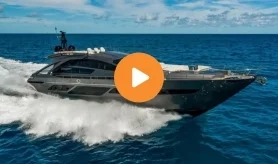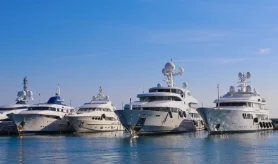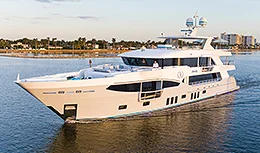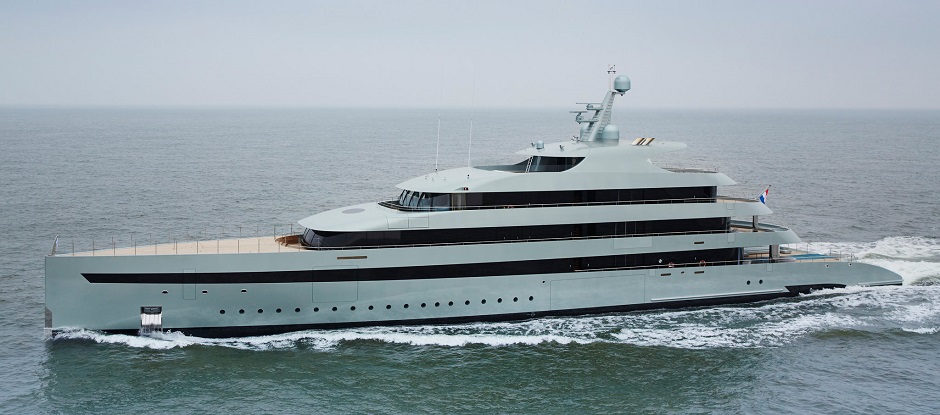- Alaskan Yachts
- Azimut Yachts
- Back Cove Yachts
- Beneteau Yachts
- Benetti Superyachts
- Bertram Yachts
- Boston Whaler
- Broward Yachts
- Buddy Davis Sportfish
- Burger Yachts
- Cabo Yachts
- Catamarans
- Carver Motoryachts
- Center Console
- Chris-Craft Yachts
- Cruisers Yachts
- DeFever Trawlers
- Dufour Sailboats
- Fairline Yachts
- Feadship Yachts
- Ferretti Yachts
- Formula Yachts
- Fountaine Pajot Cats
- Grady-White
- Grand Banks Trawlers
- Hargrave Yachts
- Hatteras Yachts
- Hinckley Picnic Boats
- Horizon Yachts
- Hydra-Sports
- Intrepid Boats
- Jarrett Bay Sportfish
- Jeanneau Yachts
- Kadey-Krogen Trawlers
- Lazzara Yachts
- Lekker Boats
- Luhrs Sportfish
- Marlow Yachts
- Maritimo Yachts
- Marquis Yachts
- McKinna Motoryachts
- Meridian Yachts
- Midnight Express
- MJM Yachts
- Mochi Craft
- Neptunus Motoryachts
- Nordhavn Trawlers
- Nordic Tugs
- Numarine Yachts
- Ocean Alexander Yachts
- Offshore Yachts
- Outer Reef
- Oyster Sailing Yachts
- Pacific Mariner Yachts
- Palmer Johnson Yachts
Hybrid Megayachts have Green Bragging Rights
Going “green” has become a way of life for many, including the affluent. In the new arms race of conspicuous environmentalism, the wealthy have been building “green” mansions, driving hybrid supercars, and buying carbon offsets for their private jets. But now the eco-conscious rich have reached a new high-water mark: the hybrid megayacht.
This spring, the Dutch ship builder Feadship launched a 274-foot ship called Savannah. It has all the amenities of a typical megayacht: a 29-foot-long swimming pool, four guest rooms, a master suite and V.I.P. stateroom, gym, garage for Jet Skis, and accommodations for a crew of 26. It also has an underwater lounge with special glass for viewing underwater sea life and a giant screen that turns the room into a movie theater.
The boat’s most important status symbol, however, is in the engine room. Rather than the usual pair of hulking, diesel-guzzling engines, Savannah has a single Wartsila 9L20 four-stroke engine, three generators, and a bank of lithium-ion batteries that can deliver a million watts. The complex system allows the boat to run on its diesel engine, on a combination of diesel and electric for extra speed, or on electric power.
The engine system, along with its sleek hull and special metallic paint, helps make Savannah 30% more fuel efficient than other comparable megayachts, according to Feadship.
“That is not a small thing,” said Henk de Vries, Feadship’s chief executive. “The whole operation is cleaner and smoother.”
Granted, Savannah still has a 39,000-gallon tank. Similar-size traditional yachts often burn up to 130 gallons of diesel an hour while idling and more than 200 gallons an hour while cruising, according to yacht brokers.
Yet Savannah has been such a success that Feadship has been getting orders for more hybrid megayachts, which will start being delivered in 2018. Several other companies have started jumping into the hybrid-yacht business, with boats ranging from 50 feet to more than 200 feet and with most of their orders coming from Europeans and Americans.
“Our clients want to show themselves as being more responsible about the environment,” Mr. de Vries said. “And they also like the comfort of the hybrid.”
Of course, if they want to be responsible, the rich could always forgo a megayacht. Yet the rise of the hybrid yacht highlights one of the many contradictions of today’s wealthy, who want to show their commitment to the environment even as they build ever bigger mansions, boats and jets.
Environmentalism has become its own form of status badge and luxury marketing tool.
A modern 15,000-square-foot mansion in Sands Point on the Gold Coast of Long Island that recently went on the market for $38 million has geothermal heating, a sedum-covered organic roof, photovoltaic panels, and cisterns to reuse rainwater. Shawn Elliott, the broker, says the house, which is awaiting LEED certification, costs $1,000 a month to run, which is a “fraction of what the other mansions around here cost.”
Ferrari, McLaren, and Porsche have introduced hybrid supercars, with the hyperpowered Porsche 918 Spyder able to top 200 miles an hour and get more than 60 miles per gallon in lower-speed hybrid mode. More and more owners of private jets brag of being “carbon neutral” in their flying, by buying carbon offsets.
Yet studies show that the wealthy have an outsize carbon footprint. A British study found that the richest 10% of the population produces three times the carbon emissions of the poorest 10%. A study in Canada found that the top-earning 1% of households had three times the average emissions of greenhouse gases and twice that of the next top-earning 4%.
To reduce their impact, at least psychologically, the wealthy are turning to green luxury, like Savannah, which is by far the largest experiment in hybrid yachts. Feadship, considered the Rolls-Royce of yachting, came up with the concept several years ago but could not find any customers. Then in 2011, a wealthy European client ordered a megayacht and Feadship broached the idea of a hybrid. The client was initially skeptical, because it would be the first of its kind. But after the owner’s engineer rode several hybrid passenger ships in Japan, the owner agreed to use the hybrid propulsion system on Savannah.
While Mr. de Vries declined to give any information about the buyer, other people familiar with the project say Savannah is owned by Lukas Lundin, the Swedish mining and oil tycoon, whose family controls Lundin Petroleum, the oil production and exploration company. Mr. Lundin did not respond for requests for comment.
Savannah’s top speed in hybrid mode is 18 knots. For midrange and shorter trips, the owner can use the electric mode. For longer trips, all diesel can be used. And for top speeds, the ship can use both diesel and electric.
Mr. de Vries would not comment on the cost of the yacht, but said that the hybrid technology “made it a bit more expensive.” A typical price for a new, nonhybrid megayacht of Savannah’s size would be well over $150 million.
Feadship is not the only company that builds seafaring hybrids. Greenline, a yacht-maker in Slovenia, started making 33-foot hybrid boats in 2010. As clients have requested ever-larger boats, it has moved up to making 70-foot yachts costing $2.5 million.
Aside from its hybrid engines that are 25% more efficient than those of comparable boats, Greenline’s hybrid yachts have solar panels that keep the batteries fully charged and boost the boat’s electric drive system. The batteries also allow the boat’s air-conditioning and other systems to keep running without the engines.
Greenline has sold 400 hybrid yachts in the last five years, with dozens going to Americans.
Ziga Petac, general manager of SVP AVIO d.o.o., which owns Greenline, said the initial demand for the boats came from yacht owners who wanted more fuel efficiency and lower carbon emissions. But now customers are also attracted to hybrids for their low noise and smooth ride. In electric mode, Greenlines can cruise silently through the water, a big appeal for former sailing-yacht owners. They also save on fuel costs.
“No matter how wealthy you are, you don’t like to pay to burn 200 gallons of fuel per hour,” Mr. Petac said.
Source: Robert Frank, New York Times
For more details about Greenline Hybrid Yachts, contact:
Yacht Broker Mike Kiely | Mike@denisonyachtsales.com | 954.304.2768
Latest News & Events

|
102′ Alpha Yachts 2022 Sold by David Johnson [VIVACE]VIVACE, a 102′ Alpha Yachts first delive… |

|
86′ Sunseeker 2019 Sold by Jason Walton [GALLIVANT]GALLIVANT, an 86′ Sunseeker built in 201… |

|
112′ Hakvoort 1990 Sold by Bruce Schattenburg, Scott LaCroix, Russ Schafer, & Drew Offerdahl [TEMPO REALE]TEMPO REALE, a 112′ Hakvoort built in 199… |

|
Outer Islands of the Seychelles: Close EncountersThe Outer Islands of the Seychelles are like the… |

|
94′ Ferretti 2001 Sold by Will Noftsinger [DREAMCHASER]DREAMCHASER, a 94′ Ferretti built in 200… |

|
86′ Nordhavn 2010 Sold by Alex G. Clarke [SOLACE]SOLACE, an 86′ Nordhavn built in 2010, wa… |

|
Explorer Yacht Scintilla Maris: Sea of DreamsErik Vonk, owner of Scintilla Maris, describes… |

|
Marina MandateOnce only a second thought, marinas are now a pro… |

|
86′ Princess 2024 Sold by Max Parker [TBANK III]TBANK III, an 86′ Princess built in 2024,… |

|
Mazu Yachts Partners With Denison for Europe and the AmericasDenison is pleased to announce its collaborati… |

|
118′ Sanlorenzo 2023 Sold by Peter Quintal [UNCAGED SEA]UNCAGED SEA, a 118′ Sanlorenzo built in 2… |

|
136′ Intermarine 1999 Sold by Will Noftsinger [FORTITUDE]FORTITUDE, a 136′ Intermarine built in 1… |




